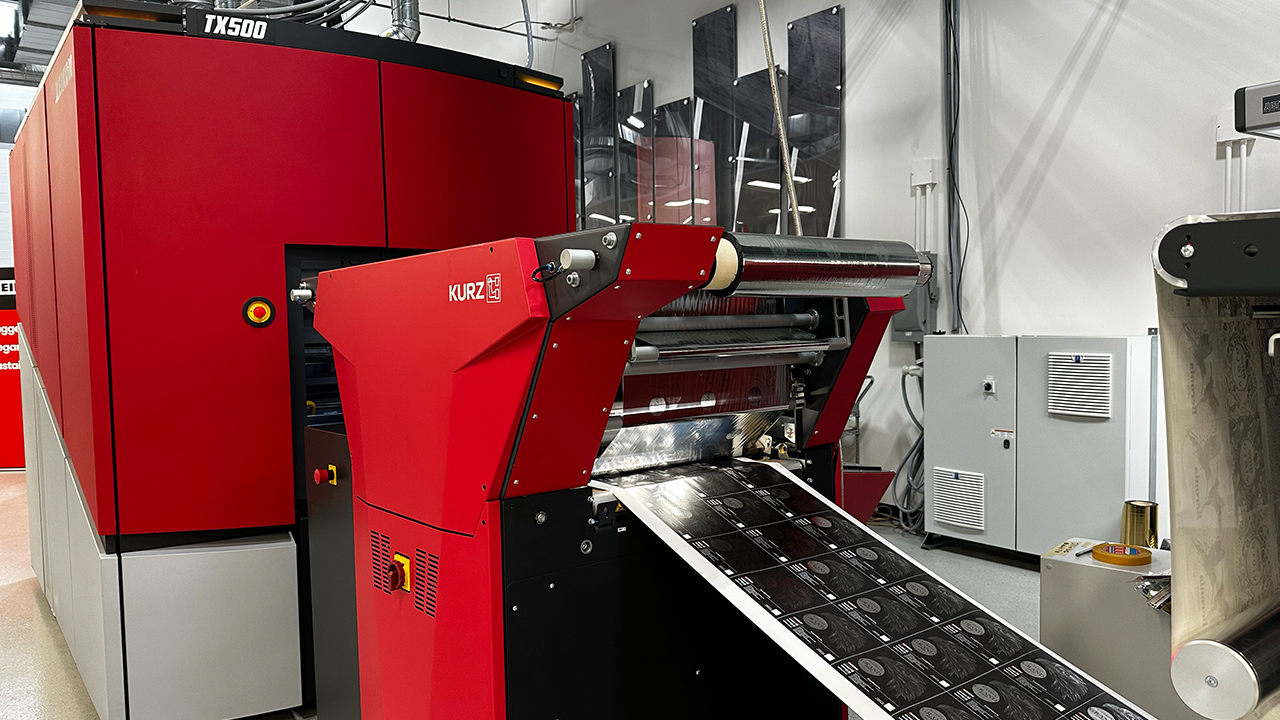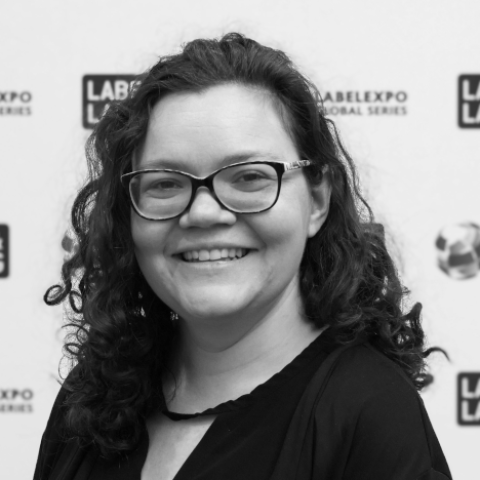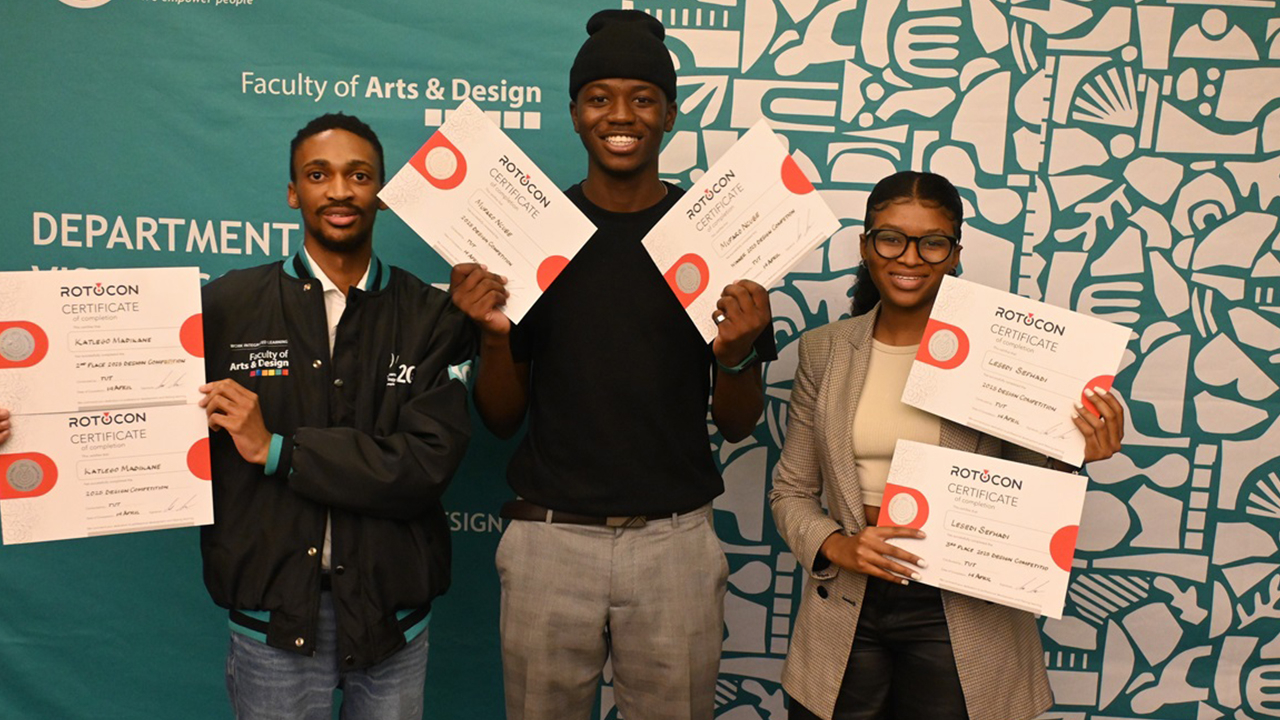Xeikon showcases digital embellishment capabilities
At an open house at its Global Innovation Center in Elgin, Illinois, Xeikon demonstrated how its TX500 press integrates in-line with Kurz’s digital metallization technology.

Xeikon’s TX500 and Kurz’s metallization module can integrate for in-line digital metallization.
Xeikon hosted an open house at its North American headquarters and Global Innovation Center in Elgin, Illinois, on June 9, just one day before the Amplify Print 2025 finishing and embellishment show in nearby Rosemont.
Xeikon used the proximity to the Amplify event to demonstrate its technology to converters, partners and other interested parties, who could visit at their convenience, examine the machinery in the demo room and converse with Xeikon team members.
A setup in the demo room showcased Xeikon’s digital embellishment capabilities, with Xeikon’s TX500 press integrated with a Kurz module for in-line, food-safe digital metallization.
‘This is really kind of a launch for this year,’ said Kent Wolford, Xeikon’s marketing director labels North America. ‘We’ve introduced the Titon [toner] but not the Kurz formally.’
Open house
The open house began with a presentation by Rob Welford, Xeikon’s president, and Wolford. After the presentation, attendees moved to the demo floor, where they saw Xeikon’s PX3300HD Panther LED inkjet press, as well as the in-line digital metallization performed with Xeikon’s TX500 press and Kurz technology.
Welford began the presentation by discussing Xeikon’s financial performance. Despite the uncertainty caused by US tariffs, Xeikon is doing well and has seen an increase in demand for toner this year, while ink sales remained stable, Welford said.
Wolford provided a history of Xeikon, which began more than 35 years ago in the dry toner technology field. Flint Group acquired the company in 2015. Seven years ago, it entered the inkjet market and quickly grew by acquiring Jetrion. Xeikon continues to support Jetrion presses, while introducing its own. Xeikon’s PX UV inkjet press is now in its third generation, the PX 3300HD.
Wolford highlighted how Xeikon’s technology has been proven to be food-safe and compliant with FDA and Swiss Ordinance regulations.
He also noted Xeikon’s focus on sustainability. The company’s inks are suitable for recycling and are made from recycled content. Additionally, the toner manufacturing plant is 100 percent powered by green electricity.
‘It’s not just the technology,’ Wolford said. ‘As a company, we’re very focused on the environment and being sustainable, even with our manufacturing facilities.’
Titon toner
The open house showcased Xeikon’s Titon toners. These dry toners are more durable and heat-resistant than Xeikon’s traditional toners, making them suitable for UV curing, according to the company. The toners can also print on a wide variety of substrates and are food safe.
‘There’s actually a photo initiator in this toner that makes it
more durable,’ Wolford said. ‘That toner, when it’s secured, when it’s sealed, it’s going to stay there. It’s not going anywhere.’
Xeikon’s website lists its potential uses in producing wine labels that don’t require varnishing and paper-based flexible packaging that doesn’t require an additional functional barrier for food safety.
Digital embellishment
Titon toners run on Xeikon’s TX500, a crucial component of the digital in-line metallization collaboration with Kurz. The two companies brought this demonstration to Labelexpo Europe 2025 in Barcelona.
The TX500 is a 20in roll-to-roll digital press, capable of running at 98 ft/min (30 m/min) and 1,200 DPI. Compared to previous models, it has additional automation in its registration and inspection technology.
For the in-line metallization application, the press uses Xeikon’s traditional toner for the metallic elements, in addition to the Titon toner. Unlike the Titon toner, the traditional toner melts in the curing process, adhering to the metallization components. The label designer has full creative control over the metallized components that can be included in the final product.
Wolford explained: ‘You’re still going to get that 1,200 x 1,200 sharp resolution, sharp detail, sharp edges capability, fine text in an in-line finished product.’
The uses for this metallization go beyond wine and spirit labels. Embellishment can add value for other end-markets and serve as an anti-counterfeit security measure. This setup enables variable printing, including for the metallized components. Xeikon’s target prospects for this application include label converters, flexible packaging converters, wall deco printers and more.
‘Every label can be different, even with metallization,’ Wolford concluded.
Stay up to date
Subscribe to the free Label News newsletter and receive the latest content every week. We'll never share your email address.


